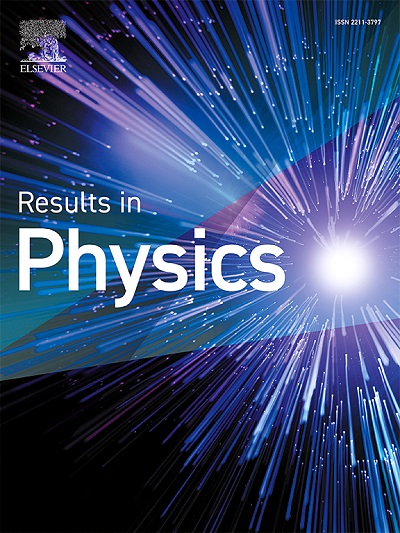Highly efficient CeF3/ZnO nanocomposite for the degradation of organic dye under visible light irradiation
IF 4.4
2区 物理与天体物理
Q2 MATERIALS SCIENCE, MULTIDISCIPLINARY
引用次数: 0
Abstract
In this study, cerium cerium fluoride/zinc oxide (CeF3/ZnO) nanocomposites were prepared using a simple co-precipitation method with different weight percent ratios of CeF3 (1, 3, 5, 7, and 9 wt%). The as-synthesized nanocomposites were characterized by different techniques, i.e., X-rays diffraction (XRD), scanning electron microscope (SEM), fourier-transform infrared (FTIR) spectroscopy, etc., for their identification and structural characterization. The as-prepared nanocomposites were used for the photocatalytic degradation of methyl orange (MO) dye. The CeF3/ZnO nanocomposite with 1 % ratio CeF3 nanoparticles (NPs) showed 85 % degradation of MO dye within 40 min, while the CeF3/ZnO nanocomposite with a 9 % of CeF3 NPs showed 90 % degradation of MO dye in 70 min. Therefore, it can be concluded that only a particular amount of CeF3 in ZnO completely degraded the dye in a short time. This study showed that increasing the doping concentration decreased the degradation efficiency. In addition, CeF3 NPs were also prepared for comparative studies. The as-prepared nanostructured materials showed excellent photocatalytic activity and can be used for the degradation of other environmental pollutants in the future.

求助全文
约1分钟内获得全文
求助全文
来源期刊

Results in Physics
MATERIALS SCIENCE, MULTIDISCIPLINARYPHYSIC-PHYSICS, MULTIDISCIPLINARY
CiteScore
8.70
自引率
9.40%
发文量
754
审稿时长
50 days
期刊介绍:
Results in Physics is an open access journal offering authors the opportunity to publish in all fundamental and interdisciplinary areas of physics, materials science, and applied physics. Papers of a theoretical, computational, and experimental nature are all welcome. Results in Physics accepts papers that are scientifically sound, technically correct and provide valuable new knowledge to the physics community. Topics such as three-dimensional flow and magnetohydrodynamics are not within the scope of Results in Physics.
Results in Physics welcomes three types of papers:
1. Full research papers
2. Microarticles: very short papers, no longer than two pages. They may consist of a single, but well-described piece of information, such as:
- Data and/or a plot plus a description
- Description of a new method or instrumentation
- Negative results
- Concept or design study
3. Letters to the Editor: Letters discussing a recent article published in Results in Physics are welcome. These are objective, constructive, or educational critiques of papers published in Results in Physics. Accepted letters will be sent to the author of the original paper for a response. Each letter and response is published together. Letters should be received within 8 weeks of the article''s publication. They should not exceed 750 words of text and 10 references.
 求助内容:
求助内容: 应助结果提醒方式:
应助结果提醒方式:


